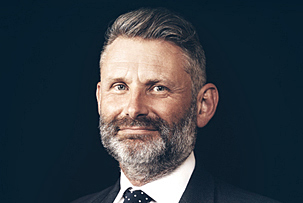Limitation Periods and the Constructive Trust

This is excerpt from Limitations Periods and the Constructive Trust written by Scott Aspinall at Ground Floor Wentworth Chambers.
What is a “constructive” trust?
The constructive trust has been referred to as one of the most difficult of all the equitable doctrines to understand, and consistent with this it is difficult to produce an all embracing definition of what a constructive trust is. In Muschinski v Dodds Deane J, said:
“viewed in its modern context, the constructive trust can properly be described as a remedial institution which equity imposes regardless of actual or presumed agreement or intention (and subsequently protects) to preclude the retention or assertion of beneficial ownership of property to the extent that such retention would be contrary to equitable principle.”
His Honour’s approach was subsequently affirmed by all members of the High Court in Baumgartner v Baumgartner.
In a sense, the constructive trust is defined by its differences from the other types of trust. It is different from an express trust because it arises or is raised without reference to the intention of the parties and indeed is sometimes, contrary to the wishes of the constructive trustee. It does not need to comply with the statutory requirements of writing.
It is different from an implied or resulting trusts, because whereas in those cases the Court is looking for is the actual or presumed intentions of the parties, in the case of a constructive trust the inquiry goes further as to whether it would be a fraud or unconscientious for the constructive trustee to deny the trust.
The traditional English view of a constructive trust was explained by F.W. Maitland in his Lectures on Equity in 1906, as operating wherever a person clothed with a fiduciary character, gained some personal advantage by availing themselves that situation and so they became they became the trustee of the advantage obtained. Maitland opined “if by reason of his position [a] trustee acquires an advantage of a valuable kind, he must hold it upon trust, he is constructively a trustee of it.” In a similar vein Cardozo CJ said:
“When property has been acquired in such circumstances that the holder of the legal right may not in good conscience retain the beneficial interest equity converts him into a trustee.”
In 1920, Roscoe Pound, then Dean of Harvard Law School, wrote an article in the published in the Harvard Law Review which drew attention to the fact that, in some recent American cases judges had treated a constructive trust as though it was “something substantial”, in other words, as though it were akin to an express trust which arose without the intervention of the Court, but that in other cases, the constructive trust was used by the Court as a “remedy” in the same way as, for example, an order for specific performance, or a declaration. Pound noted that distinction for the purpose of expressing his view that to regard the constructive trust as anything other than remedial was incorrect. Ironically, the distinction which Pound identified as incorrect, became at least in some countries, a routine way classify constructive trusts.
Attempts to structure to the field of constructive trusts, even if flawed, were ultimately welcomed by lawyers because the field is otherwise far from ordered. The constructive trust was colourfully described by Sykes as a “vague dust-heap for the reception of relationship which are difficult to classify or which are unwanted in other branches of the law.”
In Imobilari Pty Ltd v Opes Prime Stockbroking Ltd, Finkelstein J noted that Gibbs CJ in Muschinski had said the law of constructive trusts in Australia was “illdefined”, His Honour added “for my part, I would call it a mess.”
Full article: Limitation Periods and the Constructive Trust
Scott practices primarily in the areas of domestic and cross-border insolvency, banking and commercial litigation. In 2015 he became the first member of the NSW Bar to be made a fellow of INSOL International and in 2016 was appointed as a member of INSOL’s Taskforce Committee.


Comments are closed.